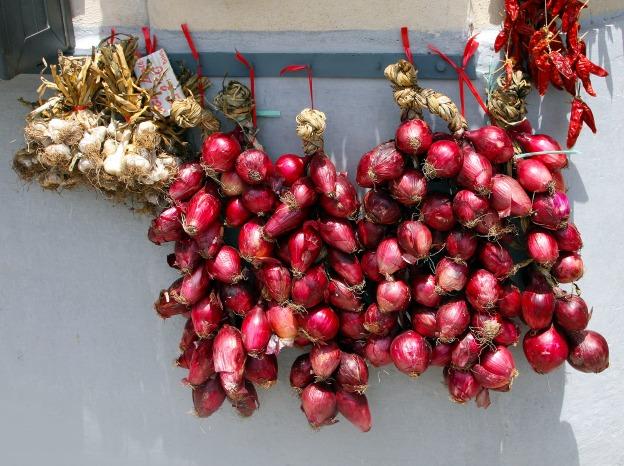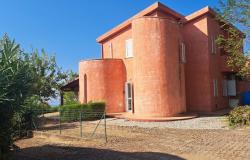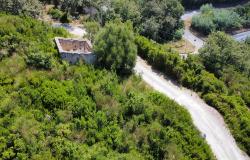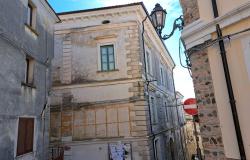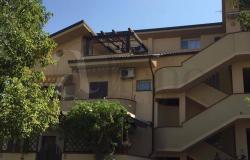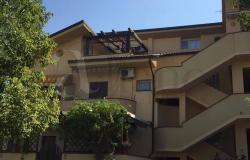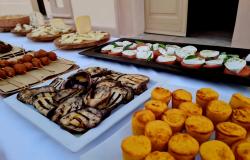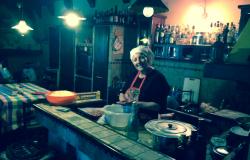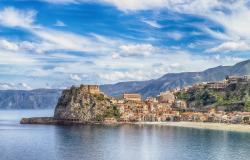Chili pepper, ‘nduja and Tropea onions are the first ingredients that come to mind when talking about Calabrese cuisine. But besides those ingredients, this region in southern Italy, the toe of the boot, boasts a variety of dishes and recipes inspired by its natural landscape and fertile terrain, mountains and hills encircled by the sea; agricultural fields yield excellent products, the mountainous areas produce delicious cheeses, while viticulture and olive production are on the rise. Calabrian recipes make large use of vegetables, especially eggplant, tomatoes, peppers, red onions and fava beans.
Calabrian cuisine is among Italy’s simplest regional cuisines, yet its flavors are strong. Here are ten foods you should try on your next trip to Calabria.
Lagane e ciciari ara cusentina (lagane e ceci alla cosentina)
Lagane are among the first types of pasta described in ancient recipe books: similar to tagliatelle, they are made with water and flour (no eggs), cooked in salt water, and then seasoned with a sautéed mix of olive oil, garlic, red pepper and chickpeas (previously boiled separately). Poor but tasty.
Pitta bread
Pitta is a traditional Calabrian flatbread with a crunchy crust and a soft inside, stuffed with peppers, tomatoes and herbs, or with sausage and peppers, or with broccoli and caciocavallo cheese...the options are many, and pitta sure is a favorite during feast days and also a classic Calabria street food.
Pasta e patate ara tijeddra
This is a dish from the town of Cosenza where ingredients – pasta, potatoes, tomato sauce, cheese and breadcrumbs – are taken raw and cooked together on the stove, then put briefly in the oven to obtain a crispy crust.
Maccheroni col ferretto
It is the classic pasta of southern Italian regions, made from semolina durum wheat and water. The ‘ferretto’ is the instrument used to make a hole in the maccheroncini. They are served with very rich sauces, such as beef, pork or goat ragu, or with ‘nduja.
‘Nduja
The Calabrian version of salame, 'nduja is a spicy, spreadable cold cut typically made with the shoulders and belly of the pig, mixed with roasted red peppers and spices. It originates from southern Calabria and is eaten with bread, with ripe cheese or can be used as pasta sauce.
Licurdia
A very inexpensive dish, this soup features different vegetables such as escarole, Swiss chard, asparagus or carrots, depending on the area where it is prepared. The main and common ingredient is the red onion of Tropea, the star of this dish, giving it flavor and sweetness. The vegetables are cooked with lard and water for a few minutes; once they have melted and turned into a cream, they are placed in a dish over slices of toasted bread, with red peppers and pecorino cheese to top it off.
Caciocavallo
Good caciocavallo cheese is made throughout Southern Italy. Calabria, and especially the area around the village of Ciminà within the Aspromonte National Park, produces the Slow Food-protected Caciocavallo di Ciminà. Caciocavallo silano is another typical caciocavallo from Calabria, precisely from the provinces of Reggio Calabria and Catanzaro. It is eaten as is with bread, vegetables or salads; it is also used to season many preparations.
Swordfish
Calabrian cuisine is also about seafood, and the most common is swordfish (as in nearby Sicily). Swordfish, or pesce spada, is cooked in different ways: riggitana, with just olive oil, garlic and parsley; bagnarota, cooked in bain-marie with lemon and capers; roasted and seasoned with salmoriglio, a sauce made with olive oil, hot water, garlic, parsley and oregano; alla ghiotta, a classic variation of the Reggio Calabria area, with tomatoes, capers and olives.
Gelato alla crema reggina
Crema reggina is a creamy pastry preparation usually consumed as gelato, and is typical of the province of Reggio Calabria, hence the name ‘reggina’, i.e. from Reggio. It is rum-based and has a pinkish color.
Mostaccioli
Originating in Soriano Calabro, mostaccioli are now widespread throughout Calabria. They are hard and dry cookies, made with honey and flour, sometimes enriched with warm must. The mostacciolari-makers give the dough different shapes resembling animals, flowers and even humans, and decorate them with colorful foil. They are usually found at fairs, sagre, patron saint festivities, at Easter and Christmas.
